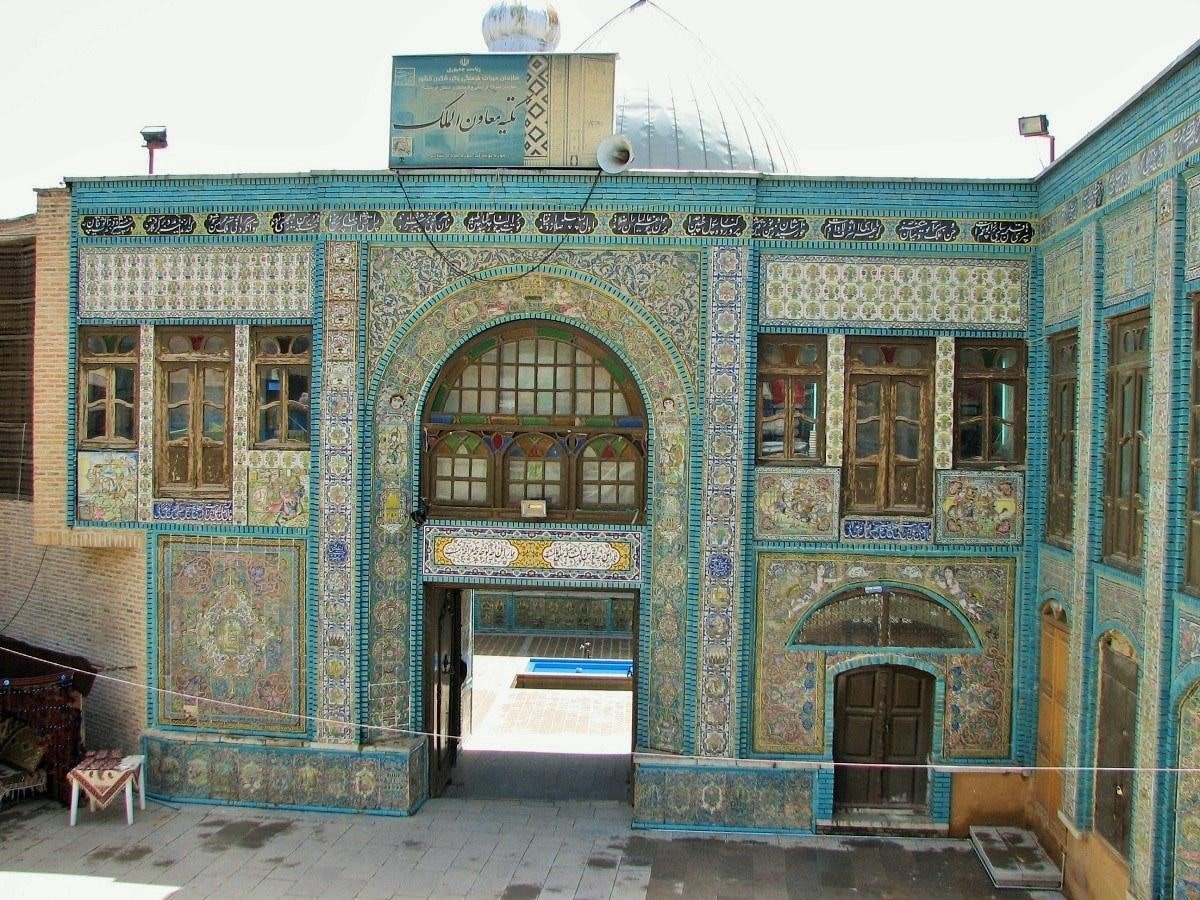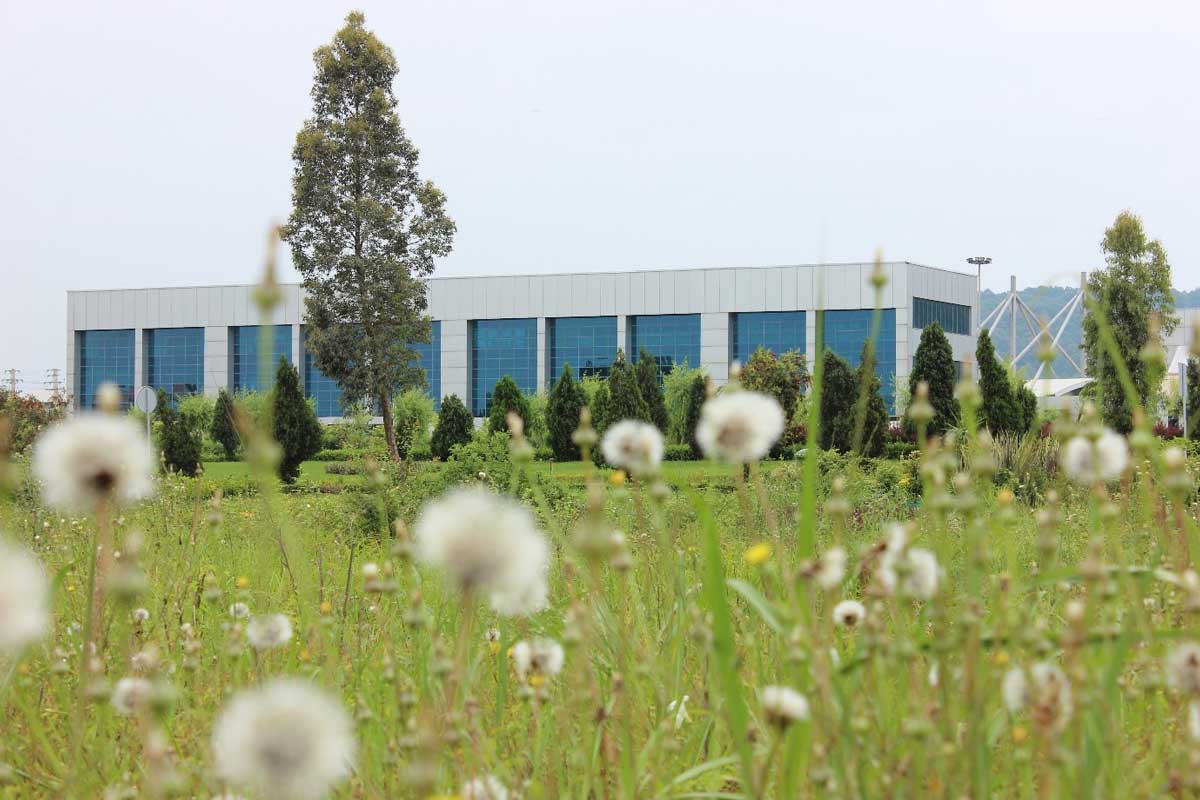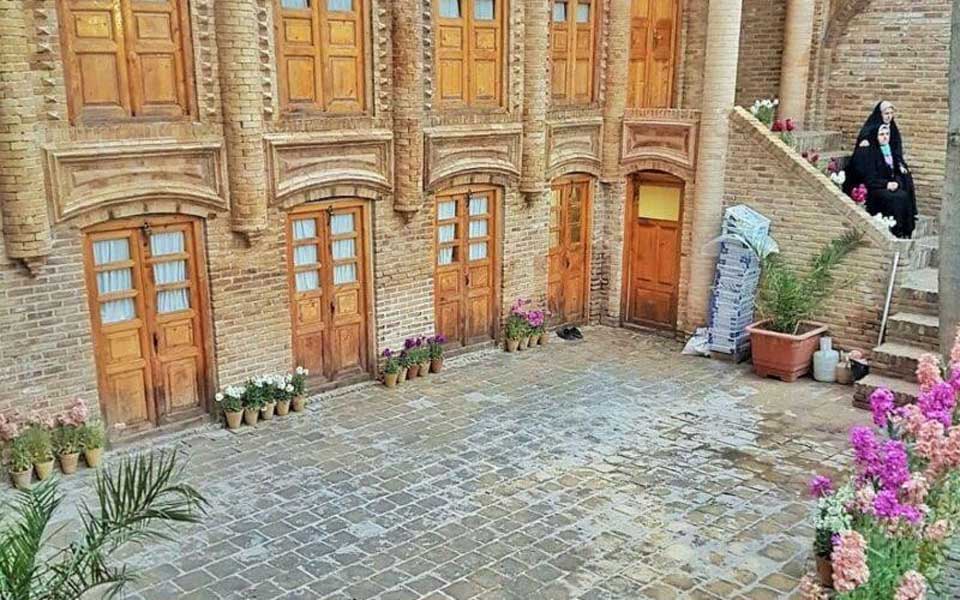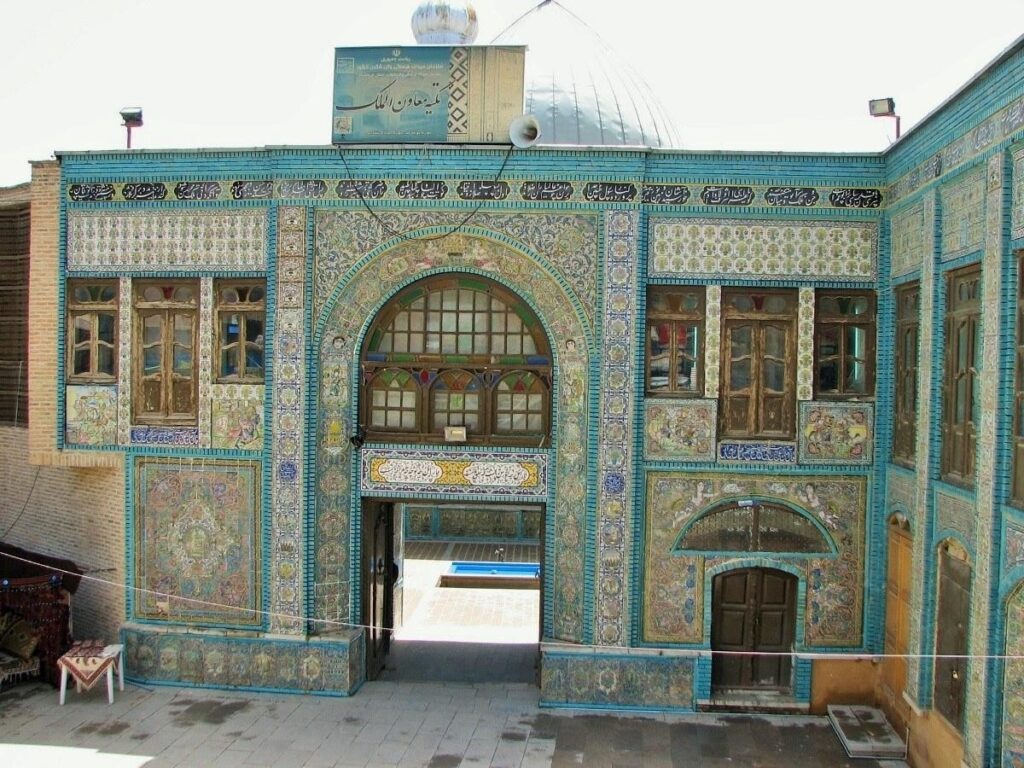
Kermanshah is one of the metropolises in Iran with a mild highland climate located in the central region of western Iran. This city is home to many historical attractions from the pre-Islamic and Islamic periods of Iranian history. Most of the Islamic-era buildings in Kermanshah were built in the Qajar period. One of these landmark historical buildings is the Tekiye Moaven Al Molk, known as the biggest Tekiye (Takyeh), a place where Shia Muslims hold Muharram events. During Muharram mourning ceremonies, this Tekiye is considered one of the most captivating Kermanshah tourist attractions.
Tekiye Moaven Al Molk, formerly known as Moin al-Roaya, is located on Hadad Adel Street. In the past, this street was known as the Abshuran neighborhood.
The History of Tekiye Moaven Al Molk
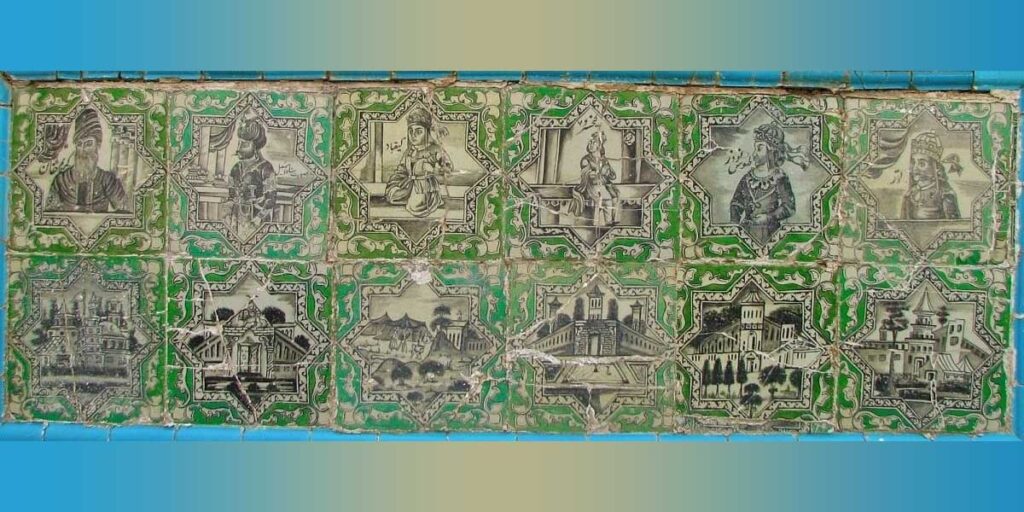
During the Qajar era, various Tekiye were built in Kermanshah to hold religious events. Tekiye Moaven Al Molk was also built in 1903 by Moin al-Roaya in the Abshuran neighborhood of Kermanshah. At that time, this Tekiye only had one Hosseiniyeh building.
Then, in 1908 solar year and during the Persian Constitutional Revolution, Zaheer al-Mulk Zanganeh blasted the Tekiye Moaven Al Molk with cannons. Also, many parts of this Tekiye were set on fire during the constitutional revolution. Many of the original Tekiye decorations, including mirror work installations, were lost to fire and some parts of the building have been demolished. Also, during this revolution, Moin al-Roaya was assassinated by the constitutionalists.
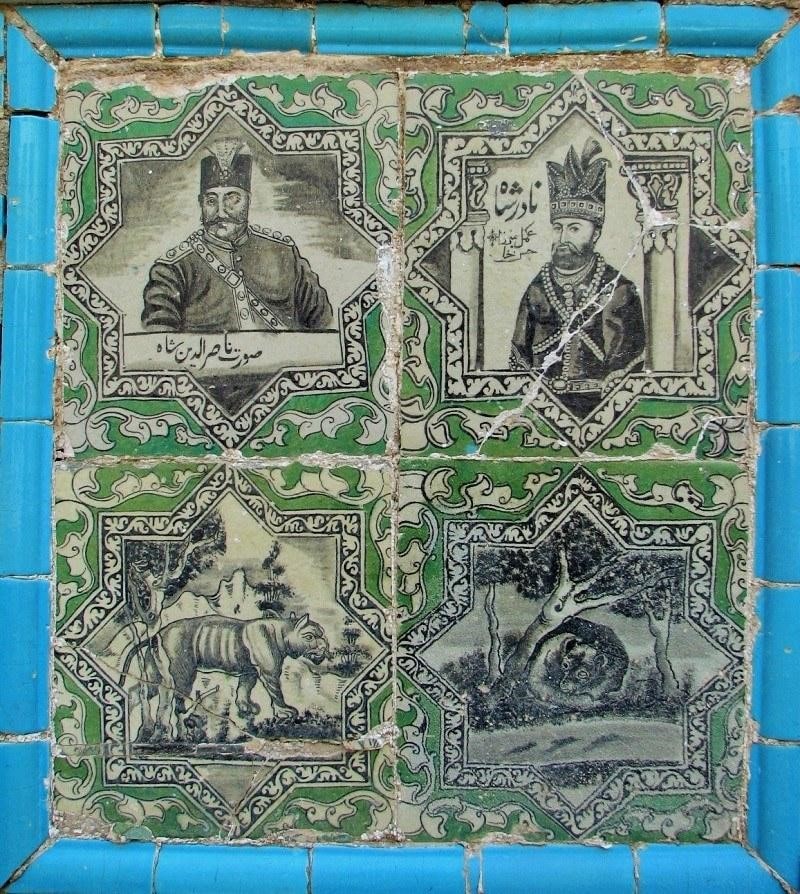
Then, in 1941, Moaven Al Molk (deputy ruler) acquired the Tekiye with the aim of repairing and restoring it. Also, in 1947, he purchased a building adjacent to the Tekiye and opened two other sections named Zeinabiyeh and Abbasiyeh near the original Hosseiniyeh.
Moaven Al Molk dedicated the Tekiye to holding Muharram mourning rituals and other religious ceremonies. He passed away one year after the construction of Zeinabiyeh and Abbasiyeh in 1948. His body was laid to rest in the Zeinabiyeh section of Tekiye Moaven Al Mulk.
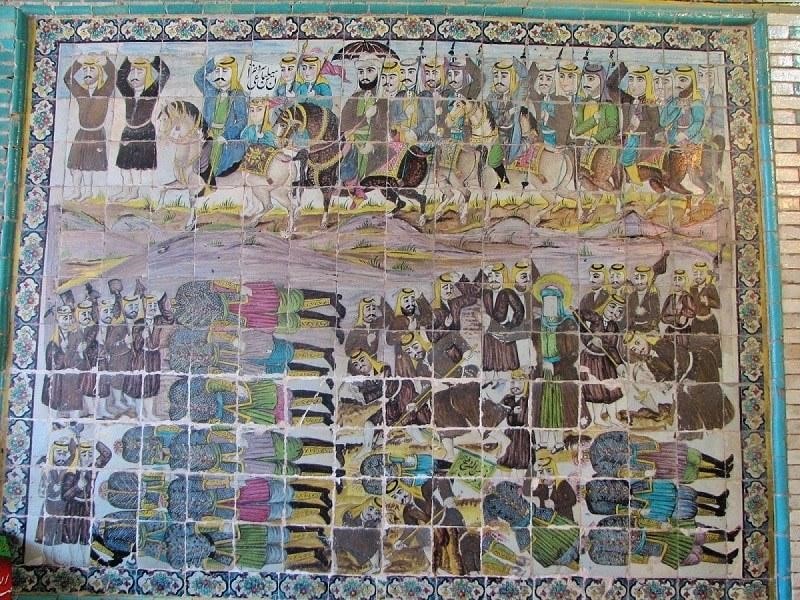
In later periods and at the beginning of the Pahlavi era, the Abbasiyeh section was converted into an Islamic Studies School to avoid the Tekiye’s demolition. The income from the school would fund the reconstruction and restoration process. The Abbasiyeh section remained a school for many years to come.
Then, in 1973, The Tekiye was assigned to the now-defunct Ministry of Culture and Art. Today this building is recognized as one of the historical attractions of Kermanshah.
Architectural Features of Tekiye Moaven Al Molk
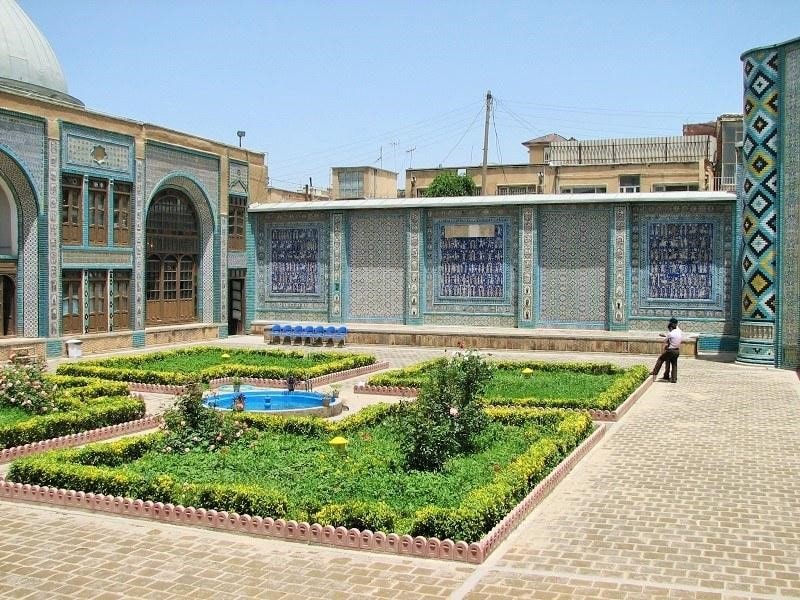
One of the distinct features of Tekiye Moaven Al Molk is its unique tilework decorations. Relief tiles and embossed tiles with illustrated motifs of mythology and history of Iran and other cultures are used in the decoration of this building. All the installations are painted using natural dyes.
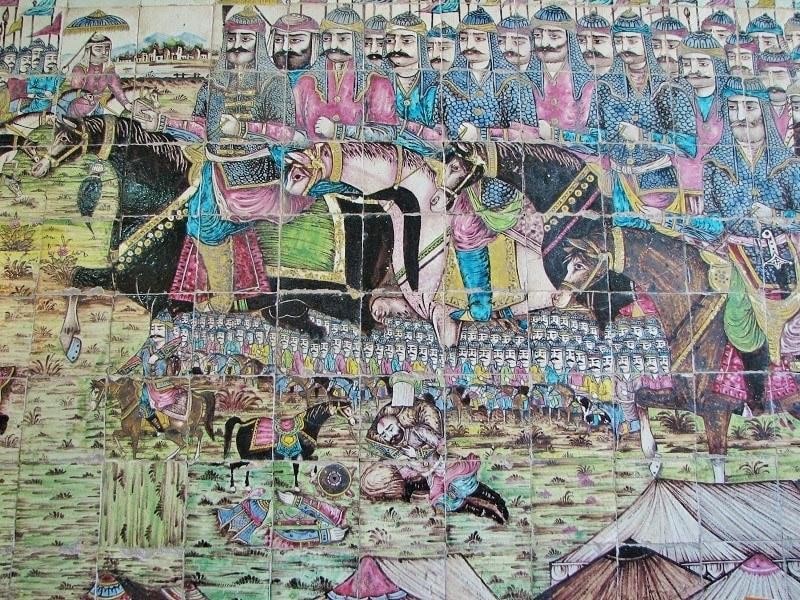
The illustrations on the tiles depict the battles of the Prophet Mohammad and Imam Ali, as well as the tragedy of Karbala. In addition, some tiles display figures of ancient Persian kings such as the Achaemenid and Sassanid kings, as well as the Persepolis.
Entrances and Sections of Tekiye Moaven Al Molk
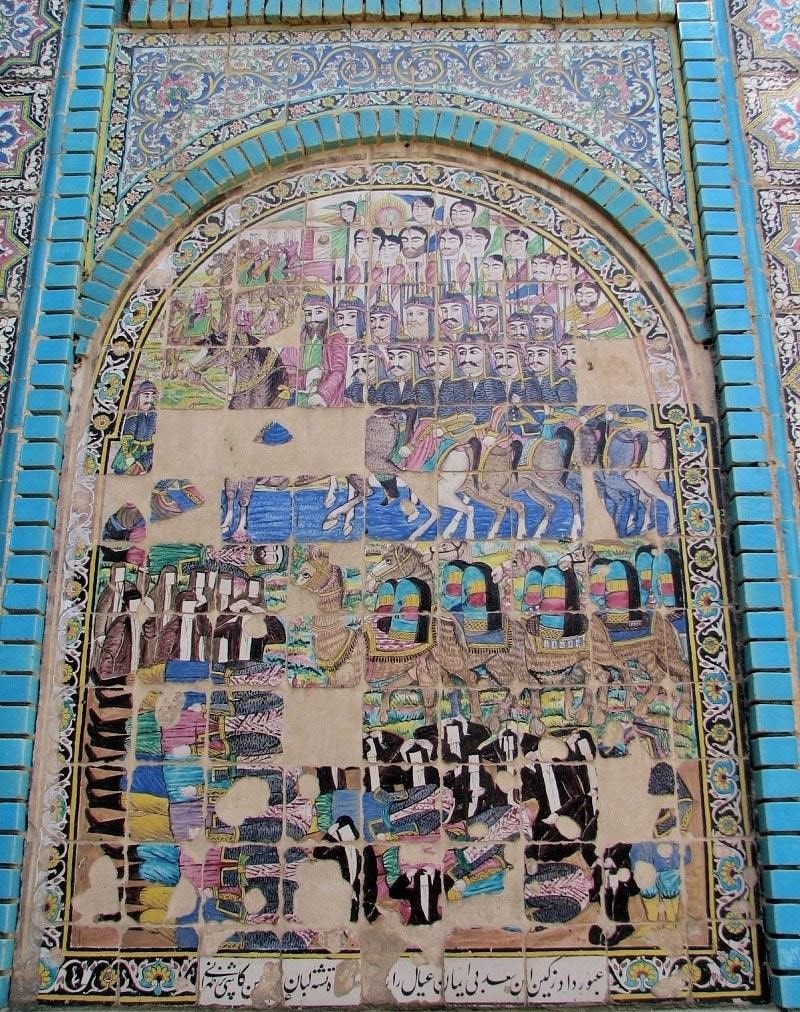
This Tekiye has three entrance doors on the western, northern, and southern sides. The doors are connected to nearby alleys and the main street. The west entrance leads to Hadad Adel street, the north entrance to Moaven Al Molk Alley, and the south entrance to Ilkhani alley.
Tekiye Moaven Al Molk has three sections, described below:
Hosseiniyeh:
The entrance is 6 meters below the street level. As a result, 17 steps are built to connect the alley to the section. Next to this staircase is a small Saqqakhana (water fountain in memory of Karbala martyrs especially Abu al-Fadl) decorated with finely painted tilework displaying the word “Abulfazl”.
Hosseiniyeh has a small courtyard surrounded by two-story pavilions and false arches. All over the false arches and pavilions are decorated with beautiful tilework. The tiles portray illustrations of Imam Hussain’s mourning rituals, such as Sine-Zani (Latmiyaat).
Portraits of Islamic caliphs and Iranian kings, as well as the Court of King Solomon, are painted on these tiles. The tiles also display the poems written by the famous poet Valeh Kermanshahi in praise of the building.
Zeinabiyeh:
The courtyard of Hosseiniyeh is connected to the Zeinabiyeh section by a small corridor. Unlike other sections of the Moaven Al Molk Tekiye, this section is covered by a roof and a dome. There was another door in this section that led to the Moaven Al Molk Alley. In the past, women could access the top floor of Zeinabiyeh through this door without passing through the men’s section. This entrance is currently blocked.
The images on the tilework decorations in the Zeinabiyeh section are mostly depictions of the events of Ashura and the scene of Imam Hussain’s last battle in the Karbala desert. There is a series of white 35*35 tiles above the imagery decorated by poems by Mohtsham Kashani.
Rasmi-Bandi patterns are used in decorating the dome vault of the Zeinabiyeh section. The Rasmi-Bandi patterns of flower and bush motifs embellish the poems of Mohtsham Kashani illustrated above.
Abbasiyeh:
This section of Tekiye has a vast courtyard with a two-story building on the eastern side. This building has an Iwan (porch) with two brick columns located in its southern wing.
The Abbasiyeh walls are decorated with Haft Rang tiles (seven-colored tiles). The tiles are covered with illustrations of Prophet Yusuf’s arrival in Canaan and sceneries of the shrines of Hazrat Ali and Imam Hussain.
In addition, the Abbasiyeh contains museums, the Kermanshah Museum of Anthropology, and a Traditional Clothing, Textile, and Jewelry Museum.
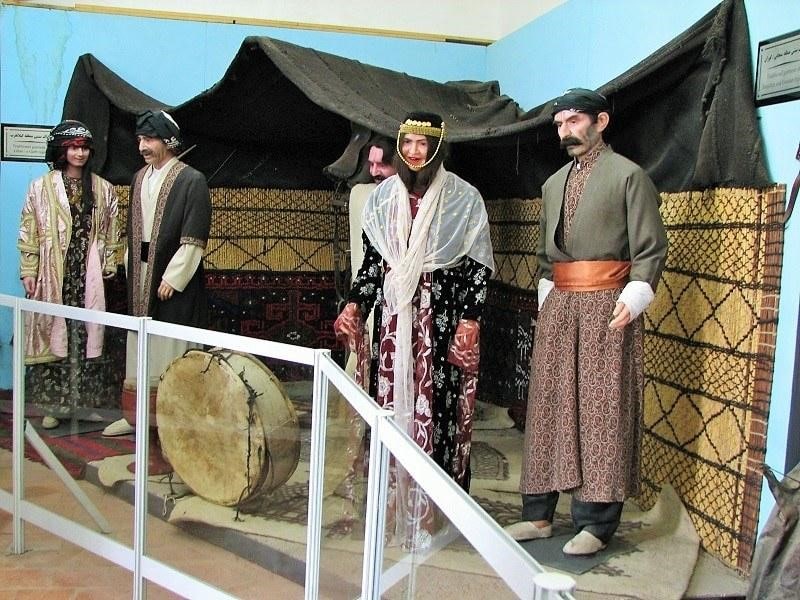
Visit This Qajar Monument in Kermanshah
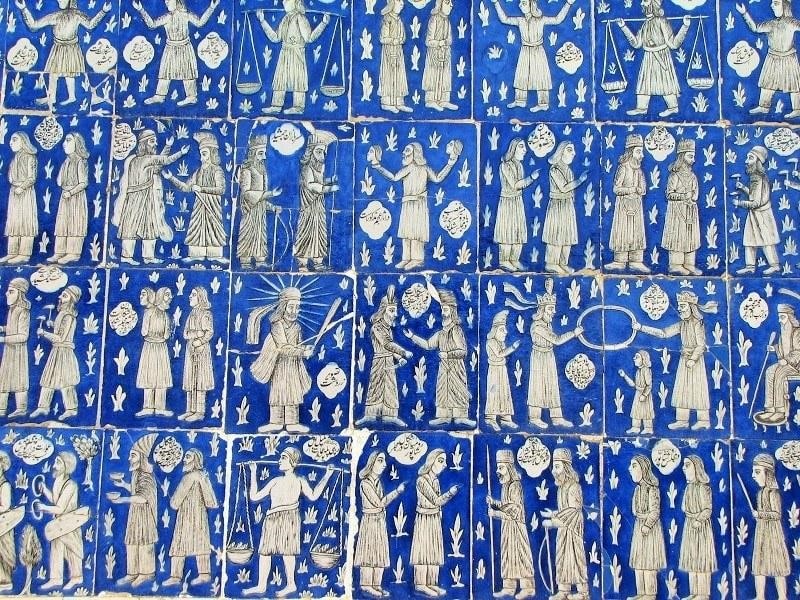
Tekiye are buildings where religious events are held regularly. Takyeh Moaven Al Molk is one of the unique examples built in the Qajar period. The tilework decorations of this Tekiye and many other features attract domestic and international travelers and pilgrims every year.
If you travel to Kermanshah on an Iran tour package or by yourself, don’t miss visiting Tekiye Moaven al-Mulk. Destination Iran invites you to visit this Tekiye along with other Kermanshah tourist attractions.
Where is Tekiye Moaven Al Molk?
Tekiye Moaven Al Molk of Kermanshah is located in the Abshuran neighborhood in one of Kermanshah’s historical areas, on Haddad Adel Street. You can see the exact location of this Tekiye below:
Frequently Asked Questions About Tekiye Moaven Al Molk
To find answers to your other questions, you can contact us through the comments section of this post. We will answer your questions as soon as possible.
How old is Tekiye Moaven Al Molk?
In 1903, Moin al-Roaya built the Tekiye Moaven Al Molk in the Abshuran neighborhood. During the constitutional revolution, the Tekiye was blasted by cannons and set on fire. After that, in 1941, Moaven Al Molk rebuilt and expanded the building.
Can you tell us a brief history of the restorations and reconstructions of Tekiye Moaven Al Molk?
Tekiye Moaven Al Molk has been rebuilt twice and restored on several occasions since its construction. The first reconstruction was after its demolition in the constitutional revolution. The second reconstruction was carried out in the years following the Iran-Iraq war. In late 2020, the Kermanshah Cultural Heritage Office started the restoration project of Tekiye Moaven Al Molk. This project aimed at humidity control, restoring damaged tilework and false arches, restoring and painting wooden doors, windows, and rooms, and crafting and installing Haft Rang tiles.
What are the features of tilework decorations in Tekiye Moaven Al Molk?
Relief tiles and embossed tiles have been used in the decoration of Tekiye Moaven Al Molk. Patterns of historical legends and myths from Iran and other cultures have been illustrated on the tiles. Natural dyes were used in painting the tiles.
What are the tourist attractions of Tekiye Moaven Al Molk?
The main tourist attraction of Tekiye Moaven Al Molk of Kermanshah is its magnificent tilework that depicts various historical and religious events.
What are the museums in Tekiye Moaven Al Molk?
Tekiye Moaven Al Molk has three sections: “Hosseiniyeh”, “Zeinabiyeh” and “Abbasiyeh”. There are two museums in the Abbasiyeh section: “The Kermanshah Museum of Anthropology” and “Traditional Clothing, Textile, and Jewelry Museum”.






